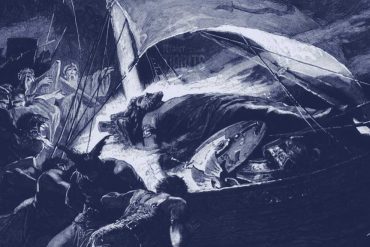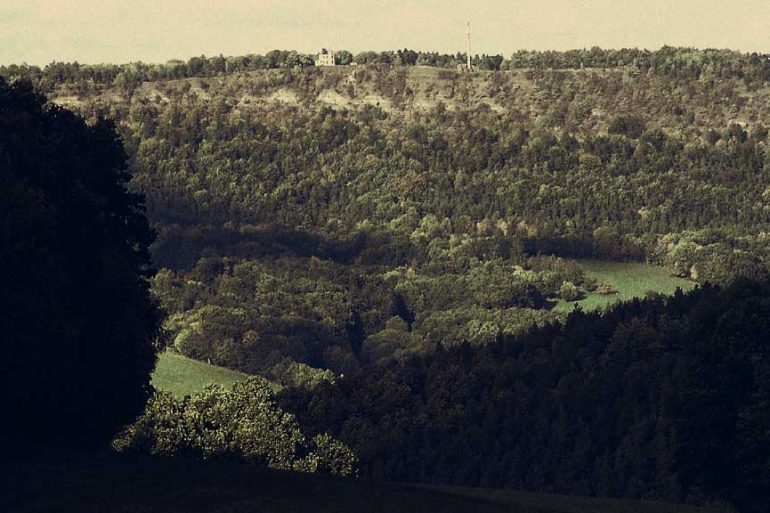The German forest is immense, vast, dense, dark, and impenetrable. It is the refuge of the exiled and of outlaws. A site of lairs for terrifying and often monstrous animals. The dwelling place for brigands and marginal individuals. The woods thereby forms a natural frontier. The Bohemian Forest (or Nemus Boemicum) to the south connects with the Bavarian Forest and the Austrian Nordwald; the forest of Falster separates Denmark from Saxony and has always been...
The crime that finally turned the gods against Loki was his role in the death of Balder, however this event is also one of the great puzzles of northern mythology. Why were Odin and Frigg, with all their knowledge, not able to prevent the disaster? What did Odin say -before he climbed on bale-fire- into the ear of his son? This is maybe the greatest secret of the North that only two know. Snorri lets...
Grimm writes that the Hörselberg of Thuringia was still considered in the 10th through 14th centuries to be the residence of the German goddess Holda and her host. He cited legends of night-women in the service of dame Holda. Those women rove through the air on appointed nights, mounted on beasts. He asserted that they were originally dæmonic elvish beings, who appeared in woman’s shape and did men kindnesses. Grimm asserted that the identity of Venus with the German goddess […]...
In the last days of paganism in Germany, the druids’ sacrifices were subject to punishment by death at the hands of the literalist Christians. Nevertheless, at the beginning of springtime the “druids” and the populace sought to regain the peaks of the mountains so that they could make their sacrifices or experience their celebrations at these remote locations, intimidating and chasing off the Christians (usually through the latter’s fear of the devil). The legend of...
It’s almost Walpurgisnacht, no better moment to have a closer look at our witches or Hexen. Where did this cruel hatred against women and the ancient pre-christian sanctuaries start? When Pope Innocent VIII (1484–92) professed his belief in witchcraft, he condemned it, and dispatched inquisitors to Germany to try its supposed practitioners and punish them unimpeded. Singling out Mainz, Cologne, Trier, Salzburg, and Bremen, the papal bull declared that “some parts of Northern Germany” were...
Deeper levels and meanings in tales not only transcend time, they also cross continents and cultures. These links and hidden meanings one can find best in original local tradition and folklore. One such link is the original French myth of Melusine, whose name is associated with honey. Her story recalls the Indian tradition whereby the royal lineage claimed to come from serpent deities. A theme that reoccurs in more than one folktale in the world. Count of Anjou The story […]...
Did you know that witches consider amber as the best gemstone for locking thoughts and memories in place and keeping them safe? Known for its soothing properties Amber was used medicinally for thousands of years for headaches, heartaches, and pains of all kinds. (another hint in the Maier-files puzzle). One of the important threads in the Maier files series is the history and hidden secret of the Amber Room or in German Bernsteinzimmer. The Amber Room...
Laurin was probably one of the most popular poems concerning the knight called Dietrich and is attested in variety of manuscripts as well as in printed editions. It almost certainly originates in the 12th century in Tyrol, and has 4 major variations or versions. They all are written in rhyming couplets, except the Dresdner Laurin which is written in stanzas. The earliest version of the story (the so-called elder Vulgate edition (ältere Vulgatversion)) starts with...
In every varieties of the Arthurian legend, the traditional reality of Arthur (who supposedly was the Warrior King of the Nordic Cimres as they definitely battled against the Anglo-Saxons between the 5th and sixth century C.E.), is less important in comparison to the aspect according to which we are led to see in his kingdom a sense of the fundamental regal function purely linked to the Hyperborean tradition, to the point that it obtained a value with symbolic together with […]...
The writer Aventinus stated that the Minne and the Minnesingers did not have anything to do with love and constant courting. Minne means “memories”. The sonnets render last honors to old lords, to the proud history of a folk and their secrets. In these songs one can find a hidden knowledge … Troubadours or Minnesingers such as Wolfram von Eschenbach proclaimed Sibilla a prophetess, a pythia of the Grâl and she dwelled inside a magical...
In Sanskrit, skull cups are known as kapala, and they are generally formed from the oval section of the upper cranium. They served as libation vessels for large numbers of deities, which were mostly wrathful. However, they are also seen with gods such as Padmasambhava (India), who holds the skull cup, which is described as holding an ocean of nectar that floats in the longevity vase. This Elixir was at the heart of many secret...
In traditional teaching the location of the center or primordial seat of the Olympian civilization of the Golden Age is to be found in a Boreal or Nordic region that became uninhabitable, Hyperborea. This tradition of Hyperborean origins, in its original Olympian form or in its new emergences of a heroic type, is at the basis of founding or civilizing deeds performed by races that spread into the Eurasian continent during the period from the end of the glacial age […]...













